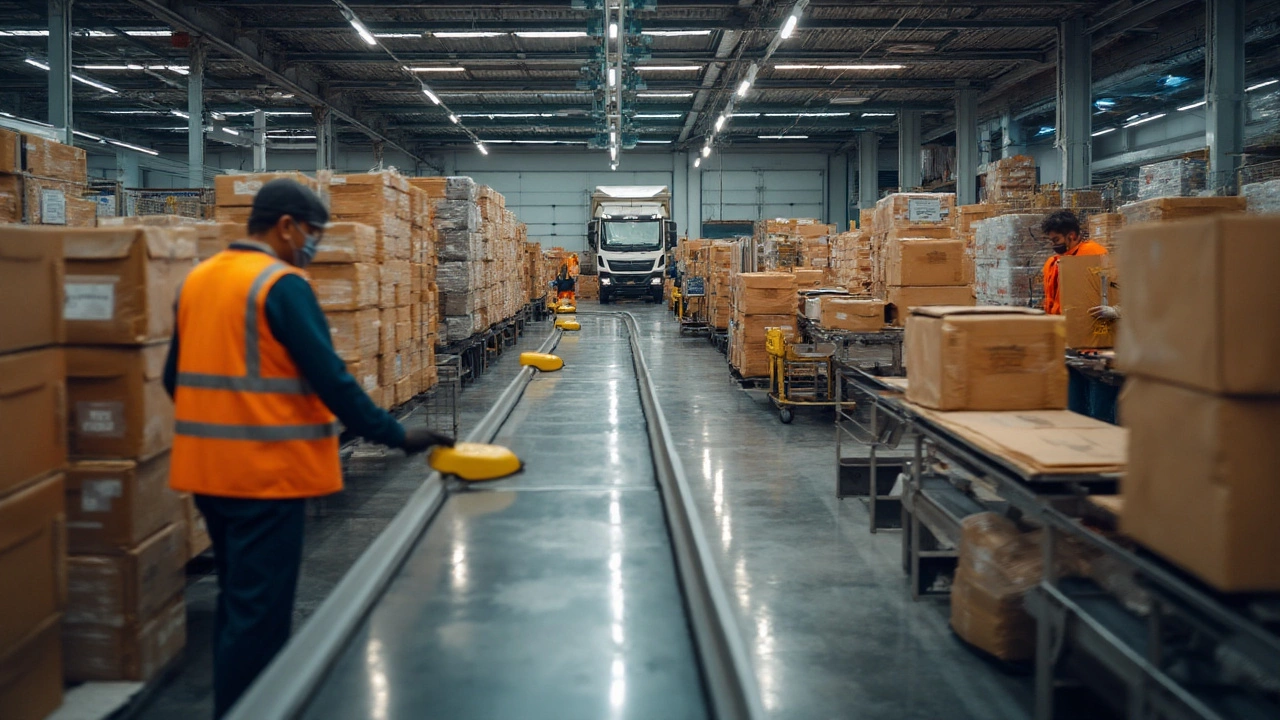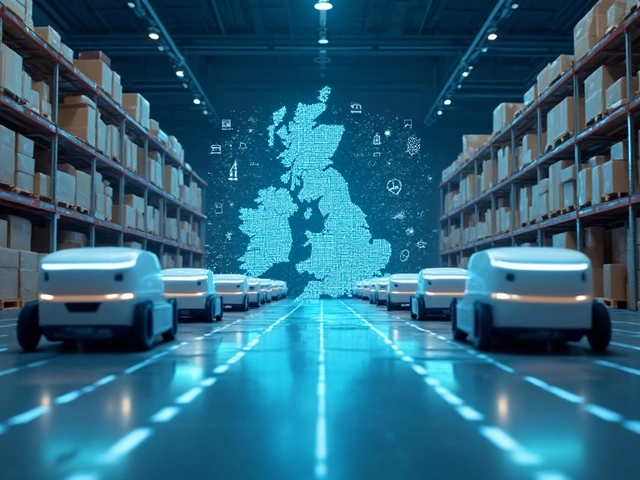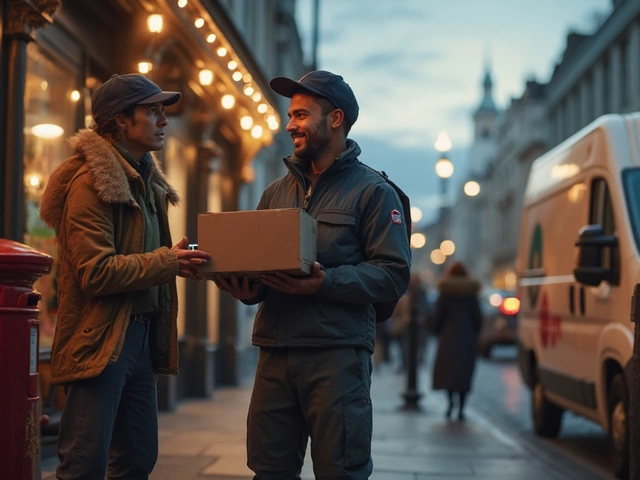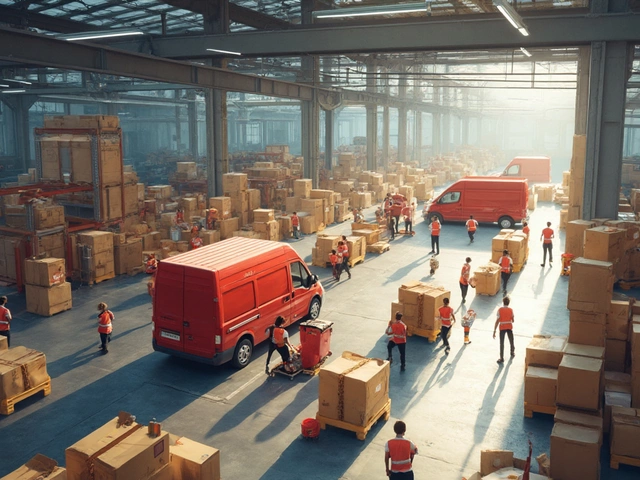Ever wonder what goes on before that satisfying notification saying your package is out for delivery? Last mile delivery gets all the spotlight, but a huge network works tirelessly behind the scenes. It’s like seeing your favorite band play the encore—fun, sure—but the warm-up acts, set design, and all those sweaty roadies tune things up so your moment is perfect. The path to your doorstep involves warehouses buzzing at weird hours, people tracking barcodes like hawks, and technology crunching unimaginable piles of data. It’s not magic; it’s planning, grit, and plenty of caffeine.
The Journey Begins: Receiving and Inventory Management
So, you click “buy now.” What happens first? It all kicks off with inbound logistics, which is logistics lingo for getting products from manufacturers to the facilities where they’ll start their journey toward you. Picture giant cargo ships rolling into ports; trucks lined up at distribution centers; forklifts humming at 3 am. According to the International Chamber of Shipping, about 90% of world trade travels by sea. That’s why the process starts long before the warehouse doors swing open.
When goods arrive, processing speed and accuracy matter. Warehouses receive shipments, often in massive bulk quantities. It sounds simple—unload the boxes and call it a day—but the reality is way fussier. Teams have to check the purchase orders, compare the labels, count the goods (automated conveyor belts do the heavy lifting), and update everything in the warehouse management system (WMS). RFID scanners and barcode guns are as common here as coffee mugs. Big brands like Amazon rely on algorithms running quietly in the background, assigning storage slots based on the item’s popularity and predicted sale season. So, sunscreen gets front row in spring, while snow boots chill out closer to the exit ramps in September. Nothing is random inside these warehouses.
A cool fact: Some mega-warehouses can process up to 200,000 incoming items each hour. When the 2024 holiday season hit, certain Amazon fulfillment centers processed double their usual volume and still hit accuracy rates of over 99%. Human hands do a ton of work: checking for damages, sorting out “mystery boxes,” and even sniff-testing some products (yes, that’s a real quality check at food warehouses). Meanwhile, automated arms and drones whiz overhead, zipping inventory onto the right shelf in a space barely bigger than your bathroom floor.
Inventory management doesn’t just mean knowing what’s in the warehouse; it’s about knowing the exact bin, rack, or shelf where it lives—down to the meter. Mess it up, and thousands of orders pile up or get delayed. No one wants angry customer reviews about missing Christmas presents. The secret sauce? Data. Every item’s path gets traced in real time, from dock to shelf and beyond. And unlike old-school warehouses, smart facilities use real-time dashboards, forecasting tools, and advanced analytics that update on the fly. Retailers like Zara even link real-time sales from their stores to warehouse stock, so trending items never run out, and slow movers don’t eat up precious shelf space for months.
If you’ve ever tracked your package and seen a weird status like "Received at facility," that’s this step. It may seem anticlimactic, but in the flow of e-commerce, it’s crucial. It’s where lost shipments get found, mis-shipped items get put back on track, and special handling (fragile or hazardous goods) gets sorted securely. And here, supply chain managers juggle labor shifts, weather delays, and return floods—all with the goal of keeping orders moving smoothly.
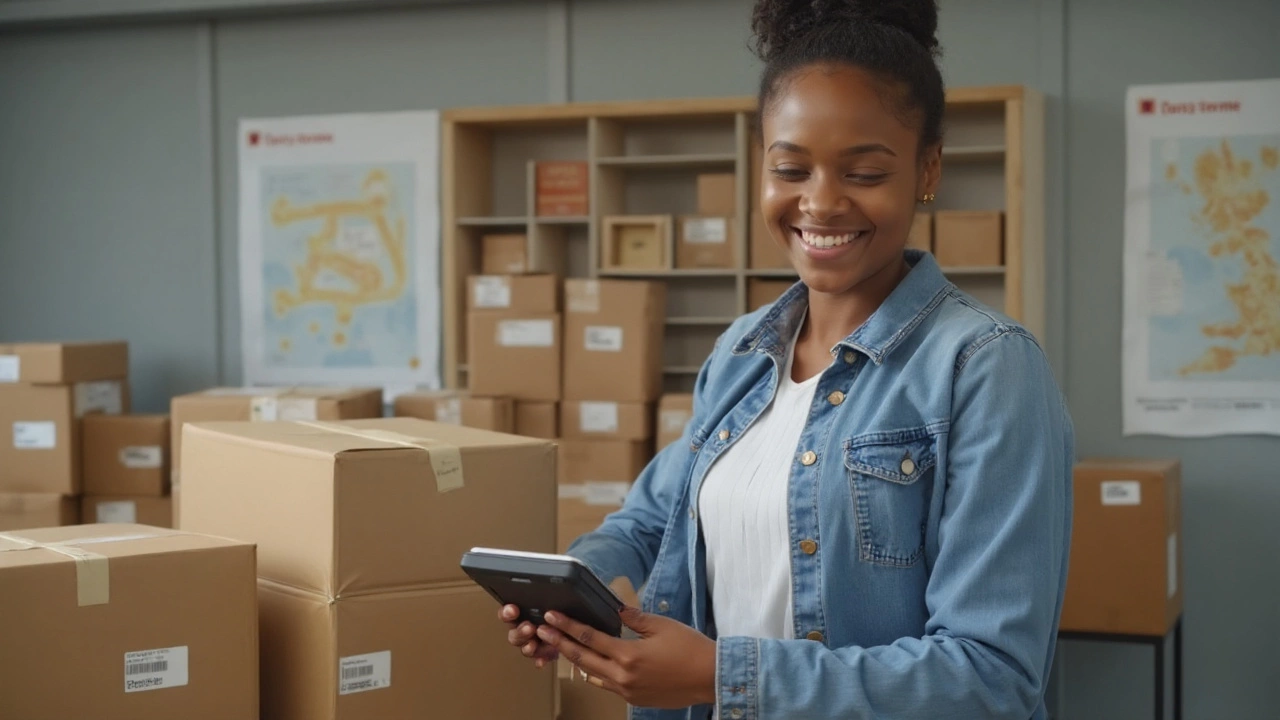
Packing, Sorting, and Consolidation Hubs
The moment an order drops in, software matches it to the nearest stocked item. But it takes fleets of workers and intelligent systems to actually assemble the bits and pieces. Some of the busiest fulfillment centers in 2025 now use a hybrid “person-to-goods” and “goods-to-person” model. Basically, instead of walking for miles between rows of shelves (basically a marathon per shift!), workers stand in designated workstations while robots deliver bins directly to them. According to a study by the MIT Center for Transportation & Logistics, this reduces average item picking time by 50%, and the error rate drops below 0.2% when automation supports manual picking.
Every product destined for a customer gets individually picked, checked, and packed. Temperature-sensitive items—like chocolate in July—get treated to insulated packaging or frozen gel packs. Luxury or fragile items might get manual double checks. Some popular fulfillment centers, like Shopify’s in Atlanta or JD.com’s in Shanghai, track the journey of each box via spine-tinglingly accurate time stamps—from item scan on the line, to placement inside a shipping box, to a final heft onto the outbound conveyor. Customers want boxes that look Instagrammable when opened, so packaging teams now double as mood board curators, folding tissue and handwriting notes for influencer-level unboxing.
Then, things get real with sorting. Not every package leaves for the customer’s front porch straight away. First, orders get clustered by region, postal code, or even street. Sorting centers swoop in: high-speed belts and advanced sorters zip packages along like a madcap rollercoaster, flicking parcels into the right chute bound for specific delivery routes. Here’s an eye-popping fact: during Alibaba’s "Singles’ Day” event last year, a single sorting hub in Hangzhou processed 1.3 million packages in 24 hours—with fewer than 100 staffers on-site. All thanks to AI-powered vision and robotic arms that can spot a label, scan it, and launch a parcel onto the right truck—all in about 1.5 seconds per package.
Consolidation is the lesser-known hero at this stage. Smaller packages get grouped together for bulk transportation. Why schlepp 12 tiny parcels across the city when you can combine them into bigger crates, slash costs, and slash emissions? Carriers like DHL and FedEx even offer “zone skipping,” bundling orders to a regional hub close to customers, then handling the smaller, separate final trips from there. This reduces congestion in city roads, trims the shipping timeline, and keeps prices under control—key hacks for retailers who want to promise lightning-fast or even same-day delivery.
Here’s a breakdown in a handy stat table:
| Process Stage | Average Time (Hours) | Error Rate (%) | Automation Used (%) |
|---|---|---|---|
| Receiving/Inventory | 4–12 | 0.15 | 85 |
| Packing/Sorting | 2–6 | 0.2 | 75 |
| Consolidation | 1–3 | 0.1 | 70 |
Want your order packed faster? Place it early in the day—late-night shippers may notice delays, because cut-off times matter more than you’d think. Pro tip: holidays can crush capacity, so buy a few days early or risk seeing that “package delayed” alert. And don’t forget special requirements: items with batteries or oversized sporting gear cruise through different hubs, so their timelines can be a day or two longer, even before the last mile starts.
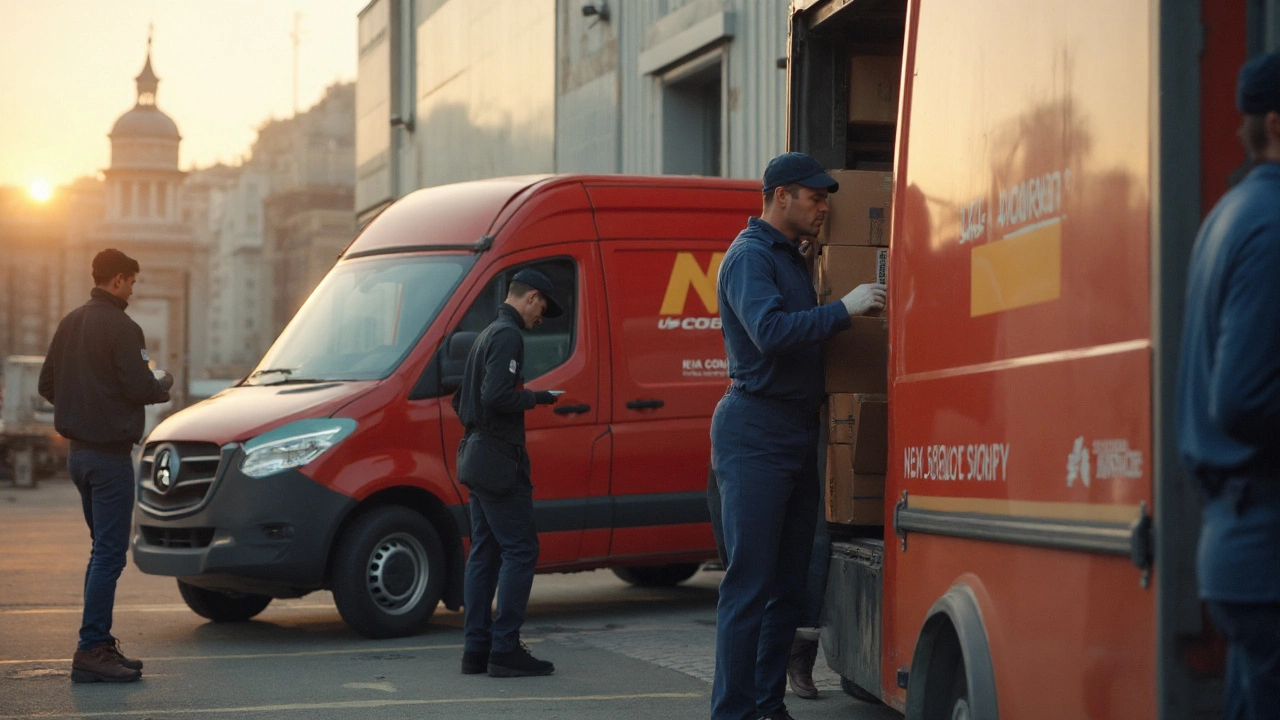
Transportation and the Hand-Off to Last Mile Networks
All sorted and bundled, your package now leaves the nest. But before a friendly driver zips it over, there’s a bigger journey ahead. This chunk is called “middle mile,” and it’s honestly underrated. In North America, middle mile usually covers 60–1,000 miles, plugging the gap between the huge regional warehouses and local delivery depots. Warehousing and logistics experts (think Maersk or Ryder) use a web of trucks, trains, and planes that feed the nation’s e-commerce beast. In the US, FedEx alone owns more than 680 aircraft, and UPS runs 125,000+ vehicles daily—most working out of the public eye, hauling those brown boxes from region to region before the final drop-off even happens.
One huge trend since late 2023 is the rise of dedicated middle mile carriers. Fact: More than 60% of Amazon’s packages traveled via their own transportation network last year, bypassing traditional partners. Why? Control and speed. Middle mile routes get optimized in real time, using AI to dodge traffic snarls, cut fuel use, and even swap out vehicles when weather gets ugly. The best systems track transit in five-minute increments, adjusting routes so nothing stalls in a bottleneck. That’s why a package shipped from Miami to San Francisco can go from warehouse to delivery depot in about 36 hours, sometimes less, without ever “touching” the last mile teams until it’s ready for the home stretch.
During this phase, local regulations, customs checks (for international shipments), and even labor strikes come into play. In 2024, the LA-Long Beach port slowdown created a 20-hour lag for West Coast shipments, reminding everyone just how fragile the middle mile can be. Big shippers usually hedge by working with several carriers, so if one network falters, others can pick up the slack. Critical shipments—medicine, event tickets, even new iPhones—often get tagged for "priority middle mile," traveling by air or direct line hauls to bypass congestion entirely. The smartest retailers bake in this flexibility to make sure nothing gets stuck, and if you’re a regular buyer, don’t be surprised if two items ordered together arrive via separate parcels. That’s middle mile optimization in action: breaking up bulk, then re-routing to deliver fastest.
The final act is the hand-off. Local depots or micro-fulfillment centers (which have mushroomed in cities since 2022) scan each parcel in, sort once more by neighborhood or delivery route, and hand everything to *last mile delivery* teams. Sometimes it’s a national carrier; other times, it’s gig drivers or e-bike couriers—depends where you live. City dwellers see a growing number of cargo bikes and electric vans zipping around. Rural routes might depend on good old-fashioned vans, or even drones in test markets. No matter the vehicle, real-time tracking tags along. Customers crave those live updates-you-can-obsess-over. Think about it: over 80% of shoppers check their delivery status at least once on the day of arrival, according to a 2025 Logistics IQ customer survey.
For those asking about international e-commerce: before the last mile even begins, global orders hit international sorting centers. Customs paperwork, compliance checks, taxes, and translation delays all add hours or days, even in the age of digitized customs. But once unpacked and cleared, those parcels race through the same steps—sorting, regional shipping, final local hand-off. It’s the same relay race everywhere—just with different players along the chain.
Here are some tips for getting the fastest possible delivery:
- Always double-check your address (typos cause thousands of failed deliveries per day).
- Use delivery lockers if you’re often out—many urban hubs offer secure pick-up options.
- If you need speedy delivery, shop from brands with fulfillment centers close to your location (most e-commerce checkouts hint at this).
- Set up delivery preferences in advance—like “leave with neighbor” or “call on arrival” for smoother hand-offs.
- Track your package the morning it’s out for delivery—if there’s a reroute, call the carrier immediately. You can sometimes fix it before the last mile driver even starts the route.
This whole process—warehouse intake, smart inventory, precision picking, masterful sorting, consolidation tricks, fast-as-you-can interstate hauls—it all comes first, quietly teeing up that final mile buzz. If you’ve ever been wowed by a same-day arrival, thank the behind-the-scenes marathon happening before the *last mile delivery* even begins.
